On April 7th, 2011, I gave a brief presentation on the history of book structure and materials, to Joy Kenseth’s “Book as Art: Renaissance and Baroque Illustrated Books at Dartmouth”. I find these opportunities a great source of enjoyment and a chance to educate the students in something they might never have contemplated. In fact this is how I came to be in the field. As a student at the University of Cincinnati, Gabrielle Fox, the then conservator there, came and gave a talk to our “History of Illumination” class. I was hooked and have never looked back. I’ve come full circle so it seems.
Below are images of the items I brought to the class to demonstrate the various steps and materials used in book construction.
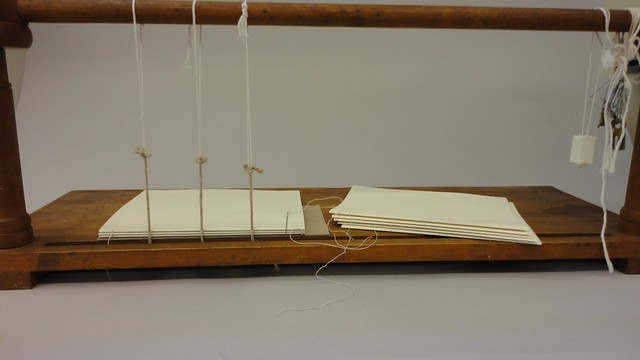
A sewing frame with signatures to illustrate the foundation of the sewing structure.
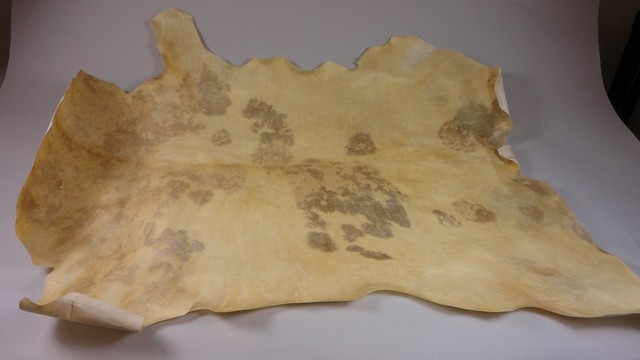
This is a goat skin of mine which makes a regular appearance to illustrate the direct derivative of the parchment into a book covering material. The dark spots are the blood vessels which remain as a result of how the skin was prepared.

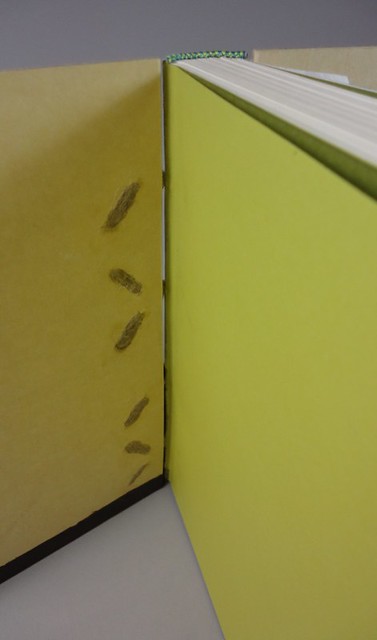
In Preservation Services, we have two cut away models that were executed by Stephanie Wolff. The two photos above show one model that features sewing on cords with the lacing pattern into the boards, along with hand sewn German style headbands.
Below the other model illustrates the case binding, with both linked and simple sewing on tapes. 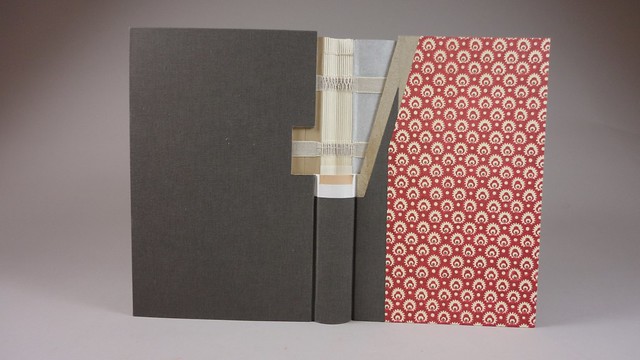
These models have been extremely helpful in teaching book construction and are consistently being used for tours and talks. I highly recommend that time be taken to create such cutaways, not only will you have illustrated samples of book structure but making them will exercise the skill of the binder.
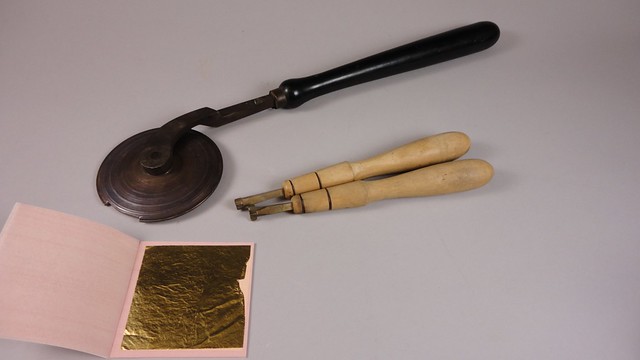
Gold leaf and finishing tools allow for the exquisite decoration of bindings.
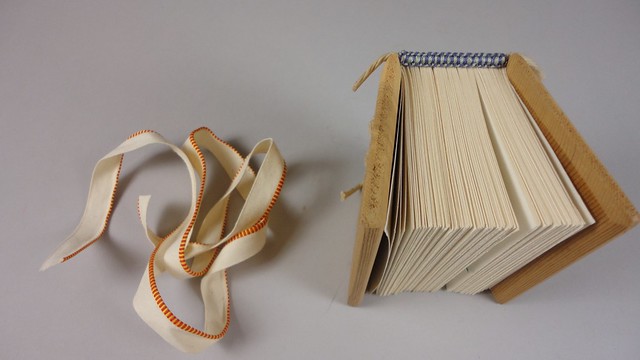
I find it so interesting that the headband has remained a component of the book. In the era of wooden boards and the need for a serious connection between them and the text block, it made perfect sense to have the extra cord attachment. However, as it stands today, it’s purely a fashion accessory, having no structural or intrinsic value whatsoever. I have no theory as to why it has remained, but only in that it adds a decorative element to our literary companions.
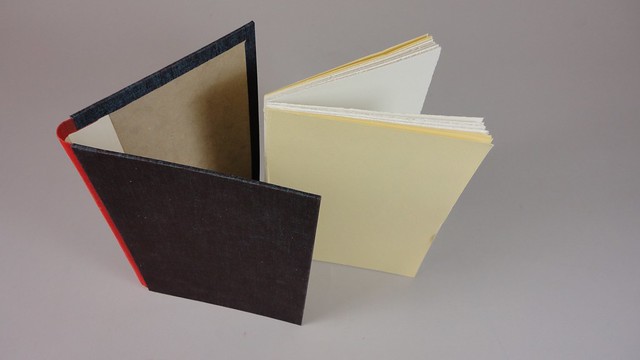
And to the state of book construction today, the sample above shows how the book case is fabricated separate from the text block, a quicker and more efficient but less durable construction from the days of past.
I am hoping that this collaboration between the faculty and conservation staff will develop into a more formal dynamic and be part of the classroom experience on a more regular basis.
Written by Deborah Howe

Great post and pictures Deborah. Definitely agree and think formally developing a collection like this is a great resource. Cheers, Peter
ReplyDeleteThanks Peter, glad you're keeping an eye on us! -Deborah
ReplyDelete